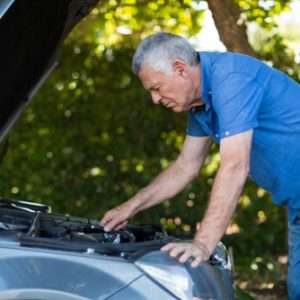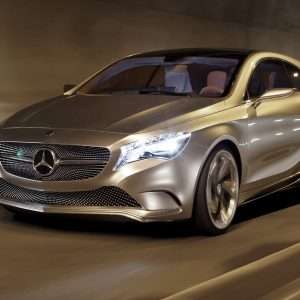The Allure of Aero Engines in Racing
The concept of using aero engines in racing cars is fascinating. It combines raw power with a unique engineering challenge. These engines, originally designed for aircraft, offer immense displacement and horsepower. However, adapting them for racing requires significant modifications. It’s a story of ambition, innovation, and sometimes, spectacular failure.
The sheer size and weight of these engines presented considerable hurdles. Think about the challenges of fitting a multi-cylinder behemoth into a chassis designed for speed and agility. It was a battle against physics, demanding creative solutions and a willingness to push the boundaries of automotive engineering.
Notable Examples
Several cars stand out in the history of aero-engined racing. These machines represent the pinnacle of this unusual engineering approach. Let’s explore a few key examples:
- The Beast of Turin: A Fiat chassis housing a massive Fiat A.12 bis aero engine.
- Brutus: Powered by a BMW VI aircraft engine, known for its incredible sound and power.
- Napier-Railton: A Brooklands legend, featuring a Napier Lion W12 engine.
Each of these cars had its own unique characteristics and challenges. The Beast of Turin, for example, was notoriously difficult to handle. Brutus, on the other hand, was a marvel of German engineering. The Napier-Railton achieved numerous speed records at Brooklands.
FAQ: Aero-Engined Racing Cars
Why use aero engines in racing cars?
Aero engines offered a significant power advantage in the early days of racing. They were readily available after major wars and provided immense horsepower. The goal was simple: to achieve maximum speed, regardless of the challenges.
What were the main challenges?
The primary challenges were weight, size, and reliability. Aero engines are heavy and bulky, making it difficult to create a balanced and agile racing car. Furthermore, adapting them for the stresses of racing required significant modifications.
Are there any aero-engined racing cars still running today?
Yes! Many of these historical machines have been restored and are occasionally demonstrated at vintage racing events. Seeing and hearing them in action is a truly unique experience. They are a testament to the ingenuity and daring of early automotive engineers.
The Legacy and Influence
While aero-engined racing cars are largely a thing of the past, their influence on motorsport is undeniable. They represent a period of unbridled experimentation and a relentless pursuit of speed. Their impact can be seen in the development of engine technology and chassis design.
The lessons learned from these early experiments helped shape the future of racing. Engineers gained valuable experience in managing high horsepower and dealing with the challenges of aerodynamics. The spirit of innovation that characterized this era continues to inspire engineers today.
Modern Applications (Sort Of)
While not directly using repurposed aero engines, modern racing benefits from the principles pioneered by these early machines. Consider the emphasis on power-to-weight ratio in Formula 1. Or the advanced cooling systems required for high-performance engines; These are all echoes of the challenges faced by those who dared to shoehorn aircraft engines into racing chassis.
The quest for more power and better performance is a constant in motorsport. And the story of aero-engined racing cars serves as a reminder of the lengths to which engineers will go to achieve their goals. It’s a story of ambition, ingenuity, and a healthy dose of madness.
The Sound and the Fury
Beyond the engineering and the historical significance, there’s something truly visceral about aero-engined racing cars. It’s the sound. The roar of a massive engine, unfiltered and untamed, is an experience unlike any other. It’s a symphony of mechanical chaos, a testament to the raw power of internal combustion.
Imagine standing trackside as one of these behemoths thunders past. The ground shakes, the air vibrates, and your senses are overwhelmed. It’s a sensory overload that leaves a lasting impression. It’s a reminder of a time when racing was more about bravery and brute force than sophisticated technology.
The visual spectacle is equally impressive. The sheer size of the engine, the exposed mechanical components, the flames spitting from the exhaust – it’s a sight to behold. These cars are not just machines; they are works of art, testaments to the ingenuity and craftsmanship of their creators.
The sound of a Napier Lion engine at full throttle is often described as “the sound of thunder.” It’s a truly awe-inspiring experience.
The Challenges of Cooling
One of the most significant hurdles in adapting aero engines for racing was managing heat. Aircraft engines are designed to operate in a constant stream of cool air at altitude. Placing them within the confines of a racing car chassis created a serious cooling problem. Overheating was a common occurrence, often leading to engine failure.
Engineers experimented with various cooling solutions, including oversized radiators, external oil coolers, and even water injection systems. The goal was to dissipate the immense heat generated by these massive engines. Success was often limited, and many races were lost due to overheating issues.
Innovative Solutions
- Liquid Cooling: Utilizing large radiators and complex plumbing to circulate coolant.
- Oil Cooling: Employing external oil coolers to dissipate heat from the engine oil.
- Airflow Management: Designing bodywork to maximize airflow around the engine.
Despite these efforts, maintaining optimal engine temperature remained a constant challenge. The extreme conditions of racing pushed these cooling systems to their limits. It was a constant battle against the laws of thermodynamics.
The Drivers: A Special Breed
Driving an aero-engined racing car required a unique set of skills and a considerable amount of courage. These machines were notoriously difficult to handle, demanding a delicate touch and a willingness to wrestle with immense power. They were not for the faint of heart.
Drivers had to contend with extreme vibrations, deafening noise, and unpredictable handling. The lack of sophisticated safety features added to the danger. A single mistake could have catastrophic consequences.
Many drivers described the experience of driving an aero-engined car as “taming a wild beast.” It was a constant struggle for control.
Famous Names
While many drivers remain relatively unknown, some achieved legendary status for their exploits behind the wheel of these machines. Their bravery and skill helped to cement the legacy of aero-engined racing.
The End of an Era
The popularity of aero-engined racing cars began to wane in the late 1930s. Advances in engine technology and chassis design led to the development of more efficient and manageable racing cars. The era of the giant aero engine was coming to an end.
The increasing sophistication of motorsport also played a role. Regulations became stricter, and the emphasis shifted towards handling and reliability. The brute force approach of aero-engined cars was no longer competitive.
A Lasting Memory
Despite their relatively short lifespan, aero-engined racing cars left an indelible mark on motorsport history. They represent a period of daring experimentation and a relentless pursuit of speed. Their legacy continues to inspire engineers and enthusiasts alike.
While they may no longer be racing on the world’s circuits, their memory lives on in museums, vintage racing events, and the hearts of those who appreciate the raw power and mechanical beauty of these incredible machines. They are a testament to the ingenuity and audacity of a bygone era.




